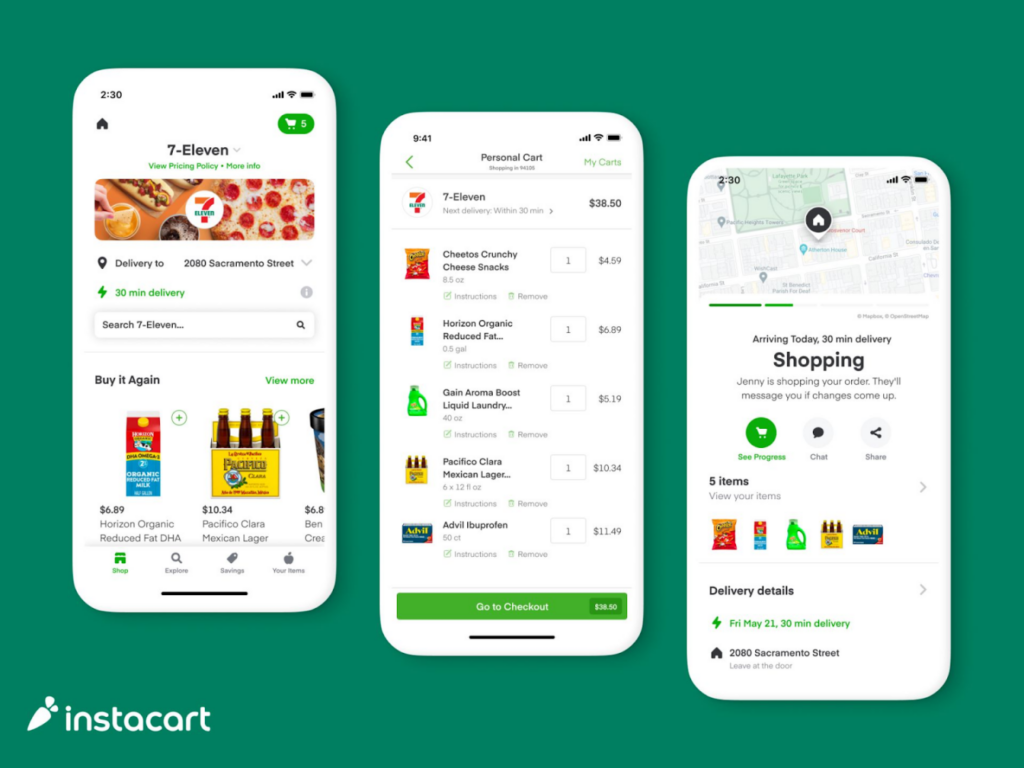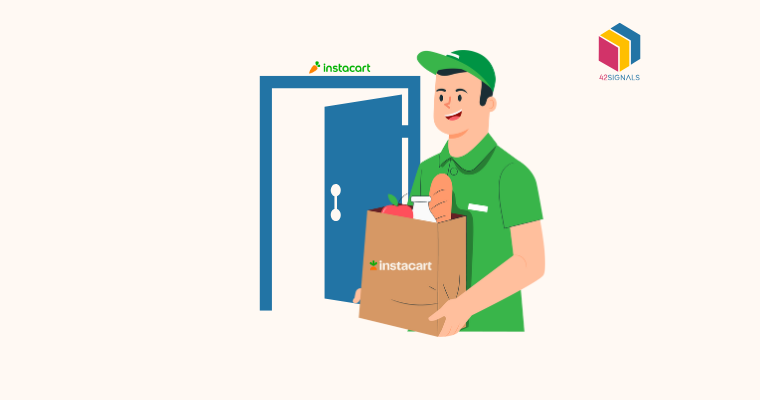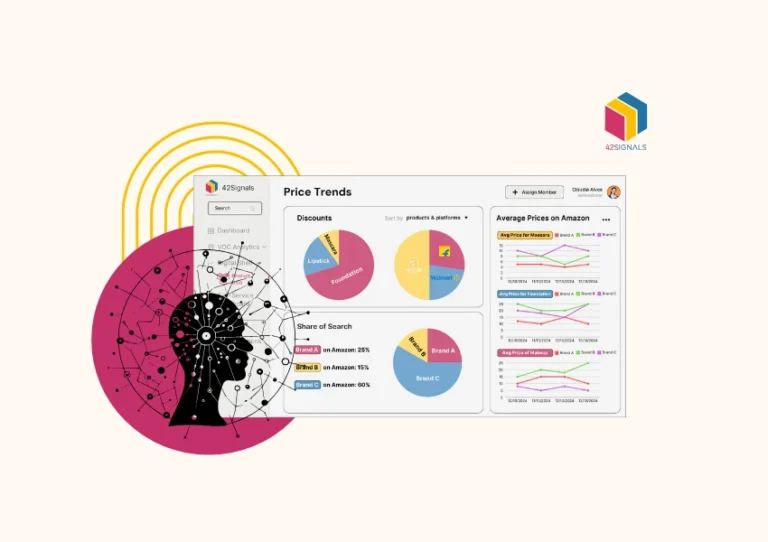In a space where convenience leads the charge, Instacart has established itself as a major player in grocery delivery, transforming how people access daily essentials.
Launched in 2012, the company has expanded significantly, boasting a valuation in the billions and collaborations with some of the largest retailers across North America.
But what truly sets Instacart apart in a highly competitive market? The answer lies in their inventive and customer-focused product strategy.
What is Instacart’s Secret Sauce?

1. Customer-Focused Experience
Instacart’s product strategy is rooted in prioritizing its users. Unlike traditional grocery shopping methods, Instacart’s platform is built to solve common challenges: lack of time, crowded shopping spaces, and the need for adaptable solutions.
The company’s interface exemplifies its focus on user preferences. The app and website are easy to use, presenting tailored recommendations based on past purchases and customized lists. This simplifies finding frequently purchased goods. Furthermore, features like “save for later” lists, proposed substitutes, and live tracking of orders ensure that the process is straightforward and hassle-free.
2. Utilizing Insights and AI
A standout aspect of Instacart is its smart use of consumer data and artificial intelligence. The company gathers a wealth of information on customer behaviors, purchasing patterns, and regional preferences. This data powers algorithms that refine the shopping experience.

For example, the app’s ability to predictively suggest items relies on prior purchases and seasonal considerations. If someone regularly buys specific kitchen staples or fresh vegetables, Instacart’s system ensures those items are front and center, making the process quicker and easier.
AI also drives their substitution system. When a product is unavailable, the platform suggests the most similar replacement, keeping customers satisfied. This blend of personalization and practical problem-solving shows how Instacart prioritizes ease while reducing disruptions in the shopping process.
3. Smart Collaborations with Retailers
Instacart’s growth is closely tied to its partnerships. Instead of maintaining its own inventory or warehouses, Instacart acts as a connector between stores and shoppers. By teaming up with established grocery chains, Instacart accesses vast inventories without incurring the expenses of maintaining stock.

Image Source: Instacart Website
This collaborative model enables Instacart to provide a diverse array of products, from fresh produce to specialty items, often at competitive prices. Retailers also benefit by increasing sales and tapping into Instacart’s advanced technology without creating their own delivery system.
Moreover, these partnerships strengthen Instacart’s foothold in regional and national markets. Aligning with well-known brands helps cater to unique customer preferences while scaling operations effectively.
4. Adaptive Fulfillment Practices
Another important piece of Instacart’s product strategy is its adaptable fulfillment system. The company uses a gig-economy workforce to handle customer orders, making it possible to scale without substantial fixed costs.

Shoppers, who pick and deliver items, are coordinated through the Instacart platform, which ensures efficient routes and timely deliveries. This structure allows for quick scaling to meet spikes in demand, such as during the early pandemic when grocery delivery saw a significant surge.
Instacart’s capacity to adjust fulfillment methods promptly has been a critical strength. For example, during periods of peak demand, the company launched features like “Fast & Flexible,” enabling users to opt for broader delivery windows, which streamlined the process and reduced delays.
5. Broadening Beyond Groceries
Instacart’s strategy goes beyond just groceries, incorporating additional shopping categories for a more comprehensive experience. Collaborations with retailers offering items like stationery, electronics, and pet supplies expand its appeal. This broadening of offerings increases order value and strengthens loyalty by making Instacart a multi-purpose platform.

Their efforts in alcohol delivery also stand out. By addressing legal and regulatory hurdles across states and regions, Instacart has tapped into a lucrative market segment, giving it an edge over competitors.
6. Emphasis on Speed and Accuracy
Instacart understands that its customers place a premium on efficiency. The company has consistently worked to shrink delivery times, often enabling same-day fulfillment within just an hour. This quick turnaround is made possible by advanced logistics systems that optimize delivery routes and assign tasks effectively.
To push efficiency further, Instacart has introduced micro-fulfillment hubs in partnership with select retailers. These centers stock high-demand items, allowing quicker assembly of orders and enabling even faster deliveries. This combination of on-demand workers and strategically located inventory showcases Instacart’s dedication to refining its logistics.
7. Generating Revenue with Ads
A significant pillar of Instacart’s strategy is its advertising platform. Instacart Ads lets brands promote their goods directly within the app, engaging with customers right at the purchasing stage. This feature benefits both brands, which see increased sales and visibility, and Instacart, which diversifies its income sources.

The advertising model leverages Instacart’s extensive consumer data for precise targeting. Brands can focus their campaigns on specific audiences or seasonal products, ensuring their promotions deliver maximum impact.
8. Resilience and Adaptability
Instacart’s knack for adjusting to new circumstances has been a defining trait. During the pandemic, the company scaled its operations significantly to meet unparalleled demand. Options like contactless delivery and senior-specific services prioritized safety and access, earning customer trust and loyalty.
This flexibility also applies to its technology. Instacart consistently enhances its platform to handle increased activity and provide smoother interactions for users. This proactive approach ensures its competitive edge even as new services emerge.
9. Eco-Friendly Initiatives
With environmental consciousness becoming a priority for many shoppers, Instacart has integrated sustainability into its strategy. Features that highlight locally sourced items or allow customers to minimize packaging waste support eco-friendly choices.

Image Source: GreenBiz
Instacart also collaborates with brands and stores to implement greener practices, such as using recyclable materials or partnering with local farmers. These actions resonate with a growing demand for sustainable options, boosting Instacart’s appeal among environmentally aware shoppers.
10. Forward-Thinking Investments
Instacart’s product approach isn’t just about addressing current demands; it’s about anticipating future trends. Investments in technologies like artificial intelligence, voice-assisted shopping, and smart home integrations highlight this focus. For instance, users can add products to their carts using voice commands through devices such as Google Home or Alexa.
These advancements place Instacart at the forefront of innovation, positioning it to shape the future of shopping. By constantly reimagining the possibilities of online grocery delivery, Instacart secures its relevance in a marketplace that evolves daily.
Conclusion
Instacart’s distinct strategy blends user-focused innovation, flexible operations, and valuable partnerships. By addressing common frustrations in traditional grocery shopping and using technology to streamline convenience, the company has established itself as a leader.
As the online grocery industry grows, Instacart’s focus on versatility, diversification, and environmental responsibility is likely to continue driving its success. Whether through inventive logistics, targeted advertising, or preparing for the next wave of retail evolution, Instacart isn’t just delivering goods—it’s redefining shopping.
If you liked this, read our other articles –
The Story Behind Kraft Heinz: An American Company Worth Over $36 Billion
The Journey of Lindt to Becoming and Staying the Top Chocolatier in the World
Nestlé: The Story Behind One of the Biggest Consumer Goods Companies in the World





